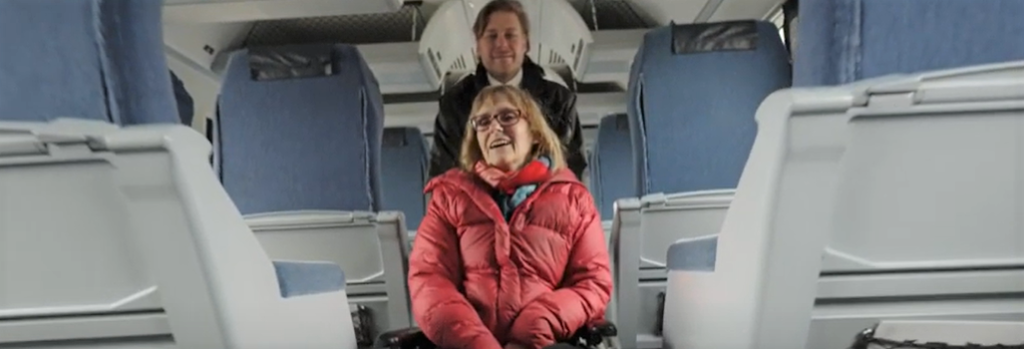Despite the pandemic, 2020 has been a good year for VIA Rail in the area of accessibility with major strides made by the company in its stated goal of being “the most accessible national and intercity mode of transport in Canada.”
With the completion of 18 projects that are part of the Canadian Transportation Agency’s (CTA) Accessible Transportation for Persons with Disabilities Regulations, which came into effect last June, the company says its targeted initiatives and various measures implemented represent “a decisive step towards universal accessibility,” and a “turning point” in the evolution of VIA.
“Driven by our mission to put our passengers first and by our wish for a more sustainable and accessible Canada, we deployed in 2020 sustained efforts to continue to improve the travel experience of passengers with disabilities,” says VIA president and CEO Cynthia Garneau. “The projects completed this year reflect our determination to keep the momentum going and to participate in the collective effort to create a barrier-free Canada.”
The services offered by VIA Rail to its passengers include, amongst others:
• An improved digital strategy to make information even more accessible online
• Onboard menus and safety cards available in braille or large print on demand
• Curbside assistance from the station entrance to the platform available in VIA’s 10 busiest stations, which includes wheelchair assistance, guiding assistance, and assistance carrying baggage
• A written version of onboard audio announcements available upon request
• Relief areas for service animals provided in 80 stations.
Via also says its 1,200 employees, including members of the management team, have also completed additional accessibility training to be even better prepared to accompany passengers with disabilities.
The company has also vowed to work closely with organizations representing people with disabilities to help better understand their needs and expectations in terms of sustainable mobility.
This includes collaboration on in VIA’s new Québec City-Windsor corridor fleet, which will be introduced in 2022 with the promise of ensuring universal accessibility features for passengers with disabilities or functional limitations and their support persons, including:
• A minimum of four spaces for mobility aids per train in Economy class and Business class
• Seats for support persons
• Braille seat numbering and information cards
• Integrated lifts for mobility aids
• Visual and audio announcement system
• Fully accessible and larger bathrooms.
“We will continue,” says Garneau, “making accessibility a central element of our decision-making process while modernizing and transforming the Canadian journey.”
A short video is available on the company website demonstrating how persons in wheelchairs board, disembark and move about VIA train cars.

